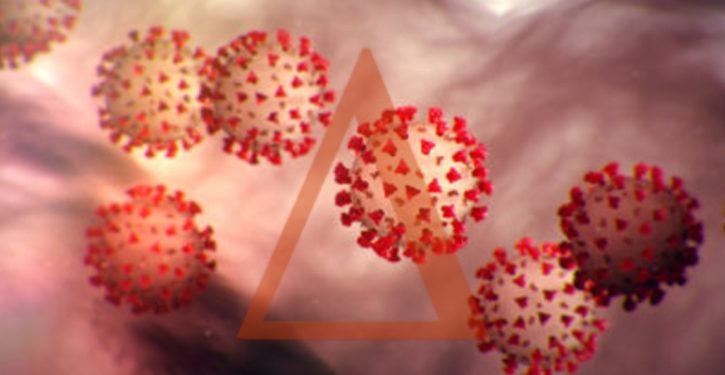
Some people with healthy lifestyles ended up with chronic heart problems after contracting COVID-19. They didn’t die of the coronavirus, but now, they have weird health problems such as strange, irregular heart beats. The Washington Post reported on this, describing a woman whose heart rate was still seesawing rapidly five months after she had the coronavirus:
She’s only 44, never had heart issues, and when a cardiologist near her hometown of Wellsville, Ohio, ran all of the standard tests, “he literally threw up his hands when he saw the results,” she recalled. Her blood pressure was perfect, there were no signs of clogged arteries, and her heart was expanding and contracting well.
Murphy’s boomeranging heart rate is one of a number of mysterious conditions afflicting Americans weeks or months after coronavirus infections that suggest the potential of a looming cardiac crisis.
A pivotal study that looked at health records of more than 153,000 U.S. veterans published this month in Nature Medicine found that their risk of cardiovascular disease of all types increased substantially in the year following infection, even when they had mild cases. The population studied was mostly White and male, but the patterns held even when the researchers analyzed women and people of color separately. When experts factor in the heart damage probably suffered by people who put off medical care, more sedentary lifestyles and eating changes, not to mention the stress of the pandemic, they estimate there may be millions of new onset cardiac cases related to the virus, plus a worsening of disease for many already affected.
“We are expecting a tidal wave of cardiovascular events in the coming years from direct and indirect causes of covid,” said Donald M. Lloyd-Jones, president of the American Heart Association.
Although healthy people can contract “long COVID” and associated chronic health problems, the problems are much more common for obese people. Obese people have higher death rates from the coronavirus, and higher rates of severe illness and complications. That may be because fat cells are literally “targets” of the coronavirus.
Stanford researchers looked at why obesity triggers such bad COVID outcomes. Their study found that COVID can infect fat cells, which means it not only causes severe illness but also “long COVID.” As the study explains, fat cells are “targets of SARS-CoV-2 infection,” leading to “pathogenic inflammation.” That “may explain the link between obesity and severe COVID-19.”
Yet during the pandemic, government officials fostered obesity, by closing schools, gyms, parks, and other places where people could exercise and lose weight. U.S. News reported on the big increase in obesity in America:
“The COVID-19 pandemic has exacerbated the nation’s obesity epidemic, according to a new report. In 2020, 16 states had adult obesity rates at or above 35%, up from 12 states the previous year….Since the pandemic began, 42% of adults in the U.S. reported gaining an undesired amount of weight, according to a Harris Poll conducted in February 2021. U.S. adults reported gaining an average of 29 pounds.”
Government lockdowns spawned obesity through things like “canceled soccer practices” and “shuttered dance rehearsals,” noted CNN.
Many children became fatter when schools closed to in-person learning during the coronavirus pandemic. Childhood obesity rose at the fastest annual rate ever.
“Overweight or obesity increased among 5- through 11-year-olds from 36.2% to 45.7% during the pandemic,” reported the Journal of the American Medical Association.
Skyrocketing obesity made suffering from the coronavirus worse.
“The evidence linking obesity to adverse COVID-19 outcomes is ‘overwhelmingly clear,’” say medical experts. Most people hospitalized for the coronavirus were obese.
Supporters of school closings claimed they were needed to protect people’s health. But by driving up obesity rates, school closings harmed kids’ health. Shutting schools actually increased coronavirus deaths, according to researchers at the University of Edinburgh. The Centers for Disease Control pointed out that there’s “little evidence that schools have contributed meaningfully to community transmission.”
Schools remained open in most European countries such as France. But in America, teachers unions successfully pushed to keep schools closed, resulting in enormous learning loss. Kids learned less when learning from home than they did when schools were open — especially black and Hispanic students, whose pass rates collapsed in states such as Virginia.
Politics, not students’ well-being, was behind school closures. Decisions about whether to close schools were driven mainly by teachers “union influence and politics, not safety,” reported Reason Magazine. Teachers unions repeatedly blocked school reopenings. Some used “sick-outs” to shut down schools or force school boards to delay school openings.
“Schools do not, in fact, appear to be major spreaders of COVID-19,” said Professor Emily Oster of Brown University. While a few students and staff have caught the coronavirus, that doesn’t show schools spread the virus: “Even if there were no spread in schools, we’d see some cases because students and teachers can contract the disease off campus.”



